0061 Set接口
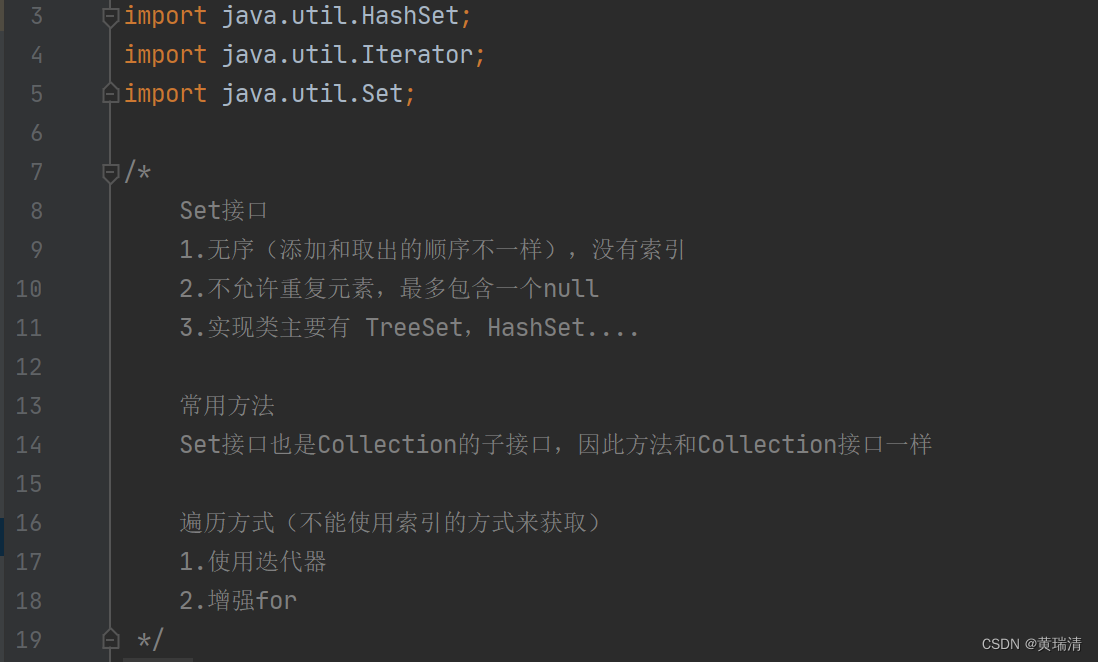

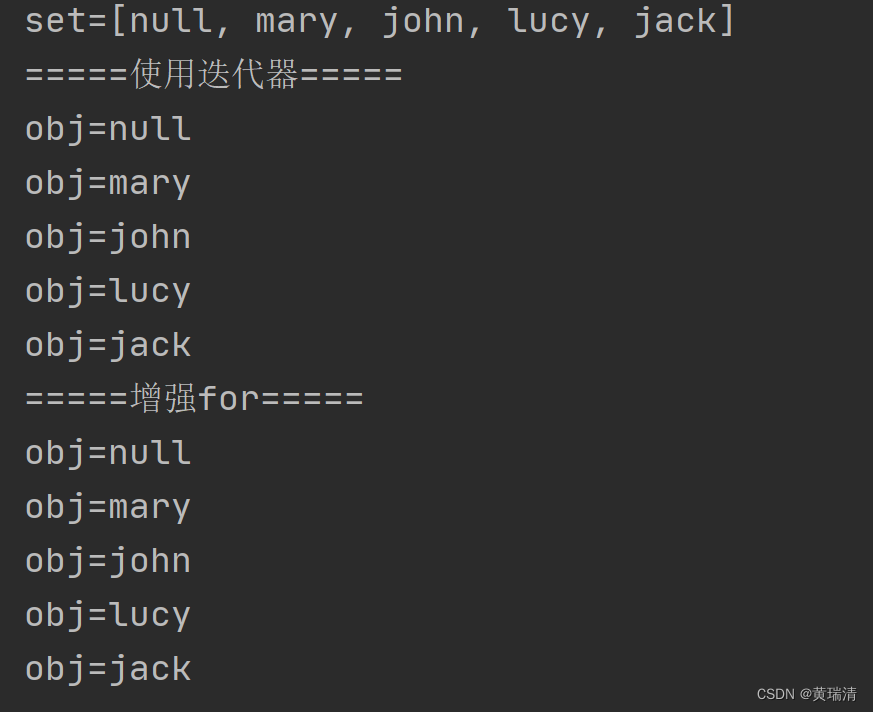

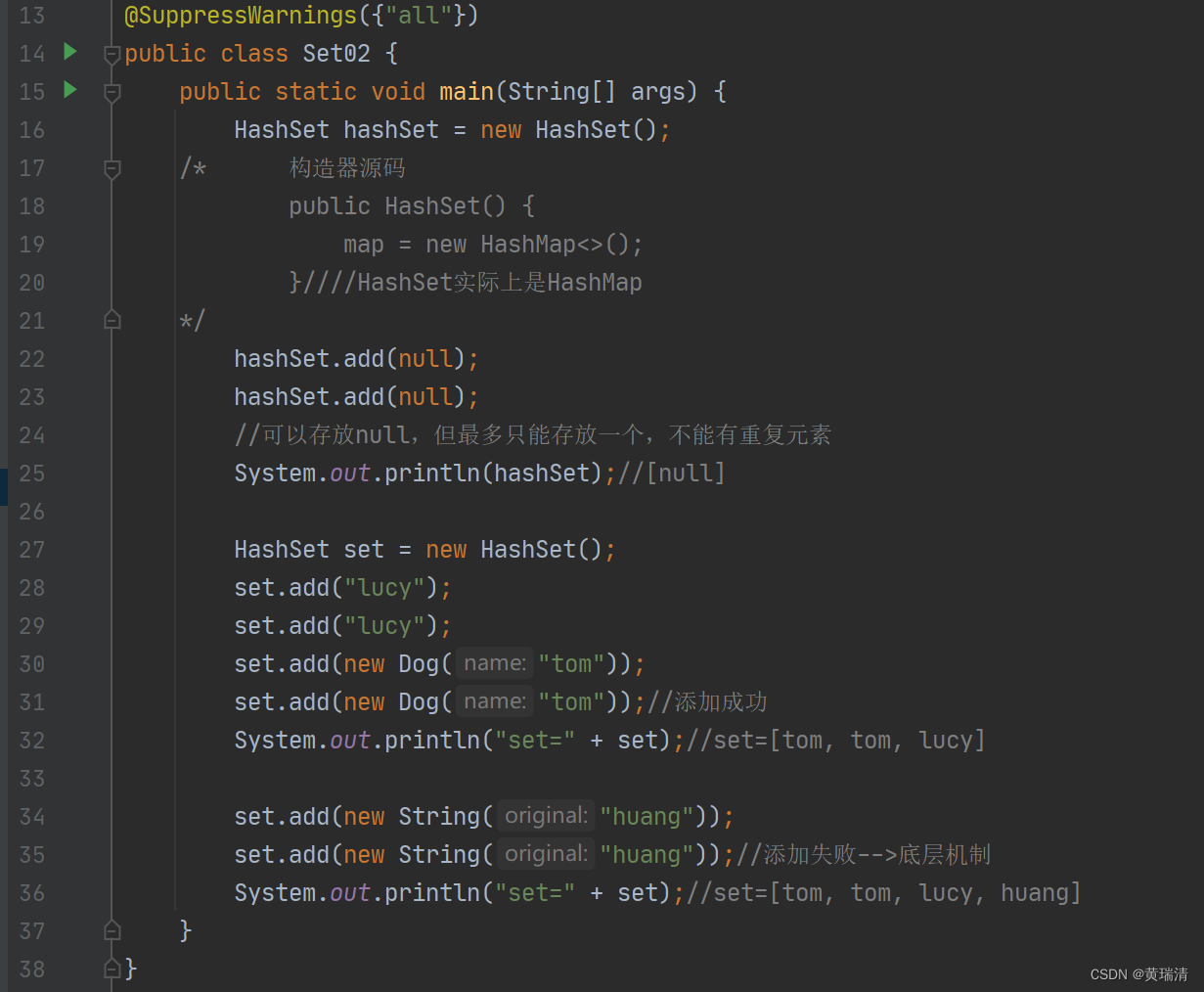

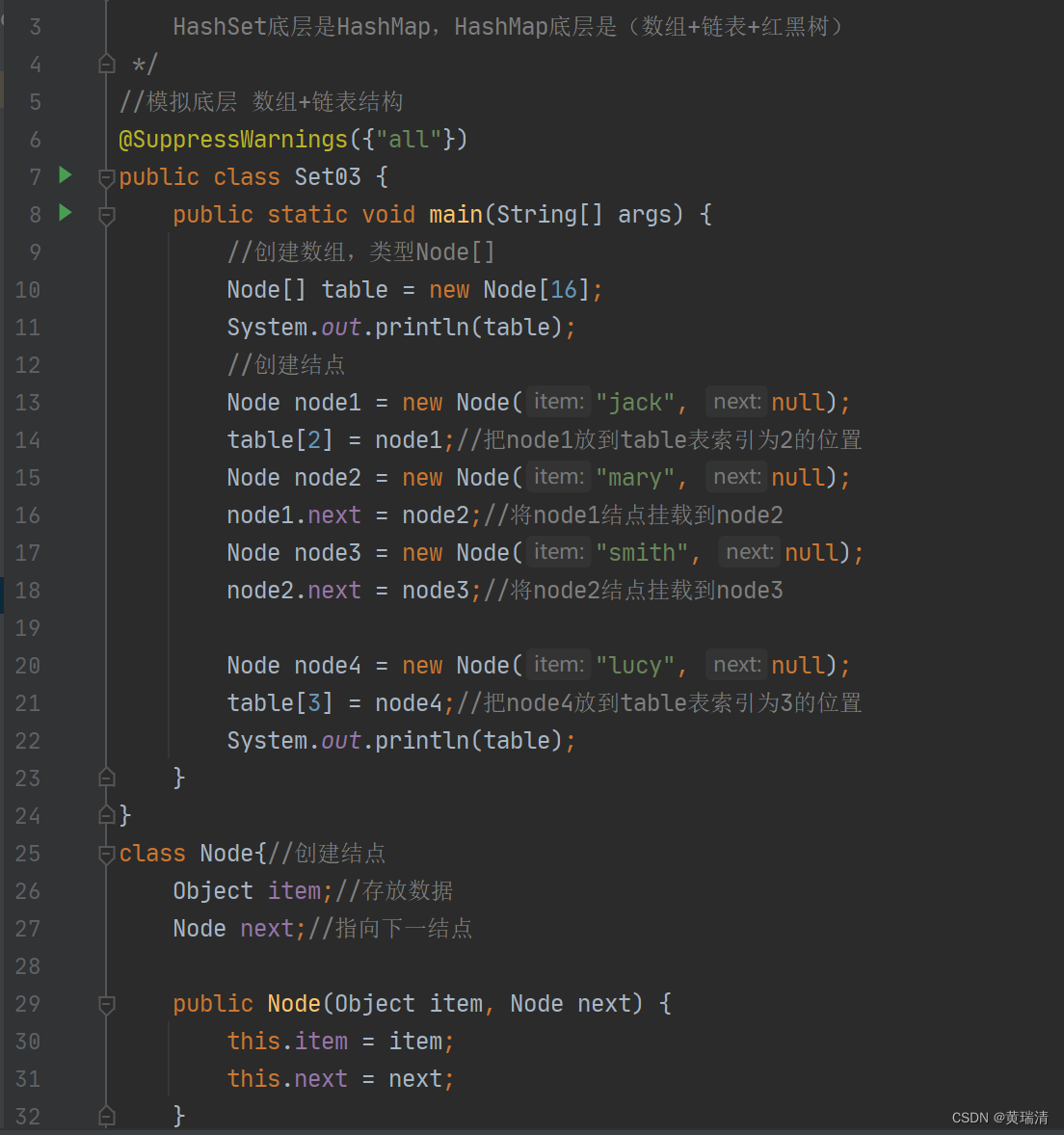
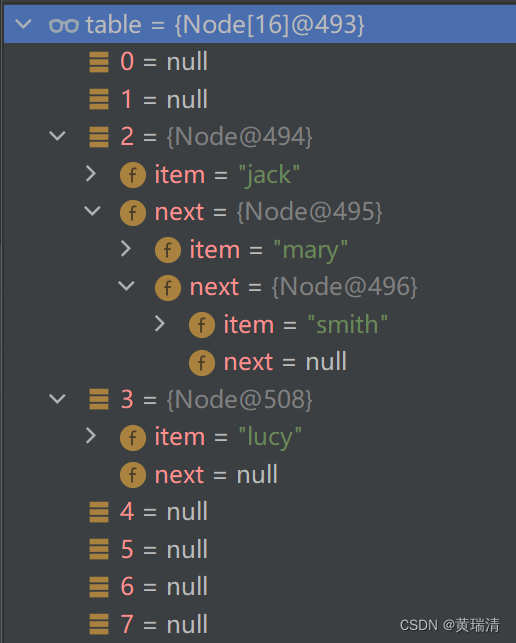

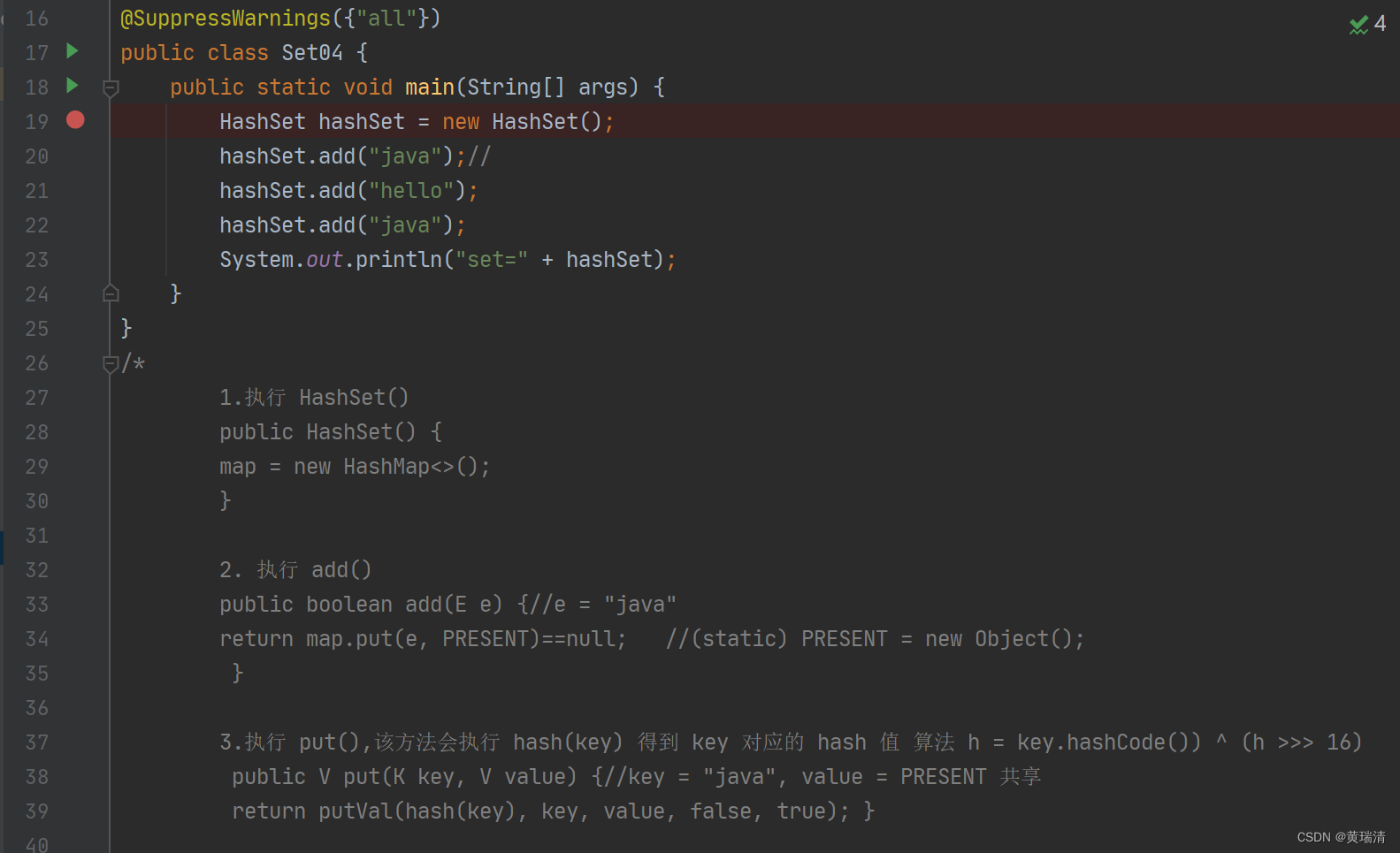
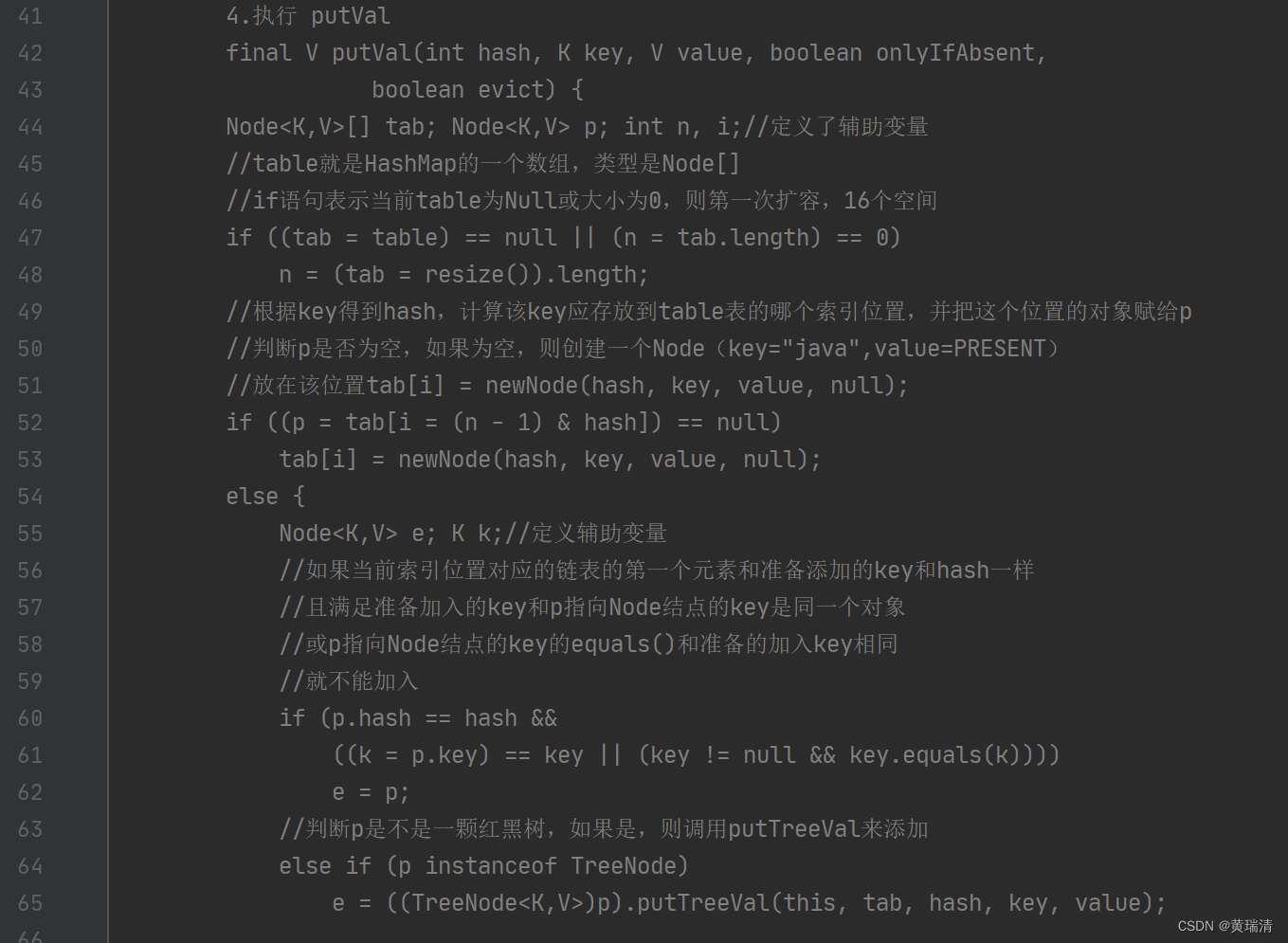
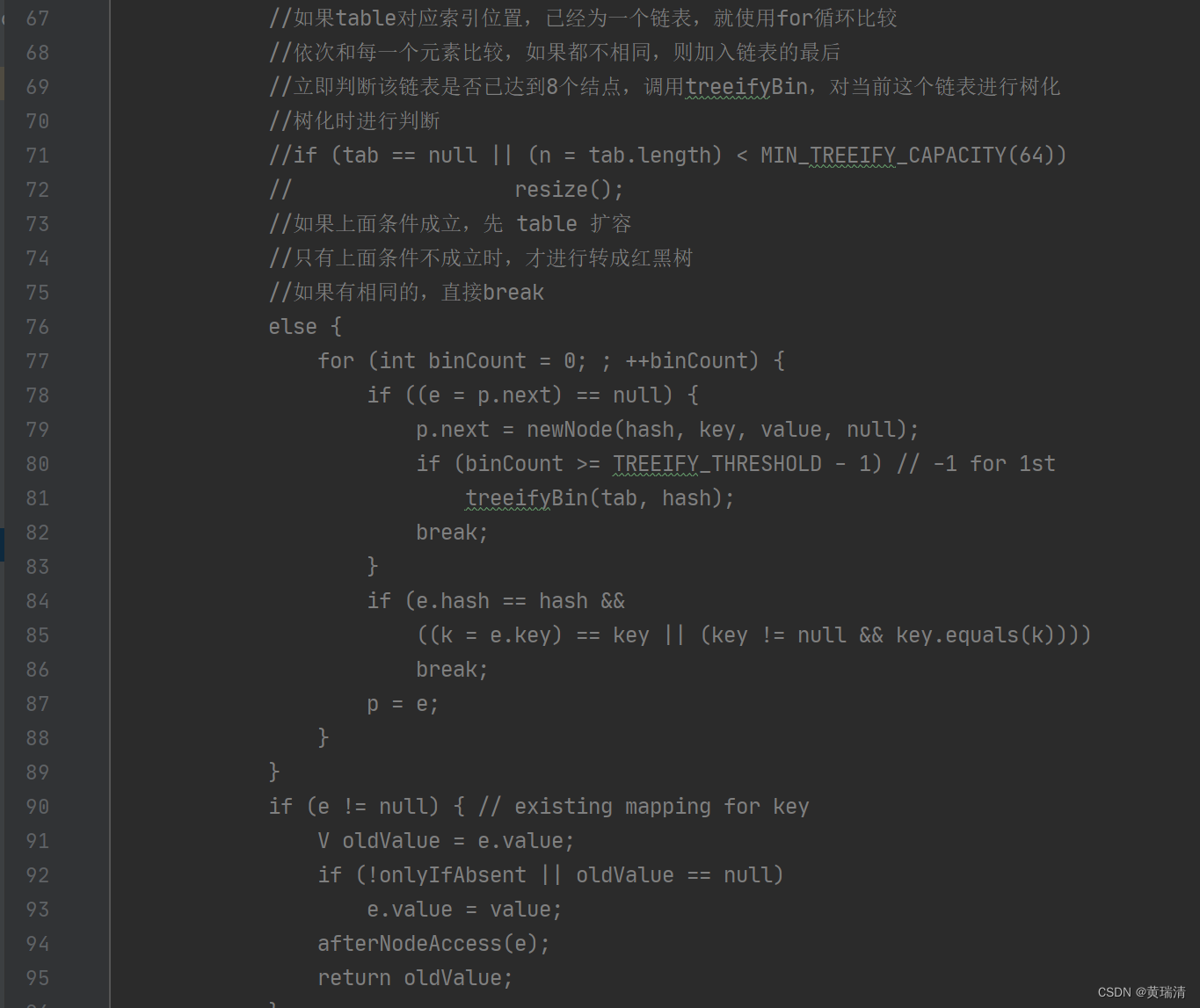


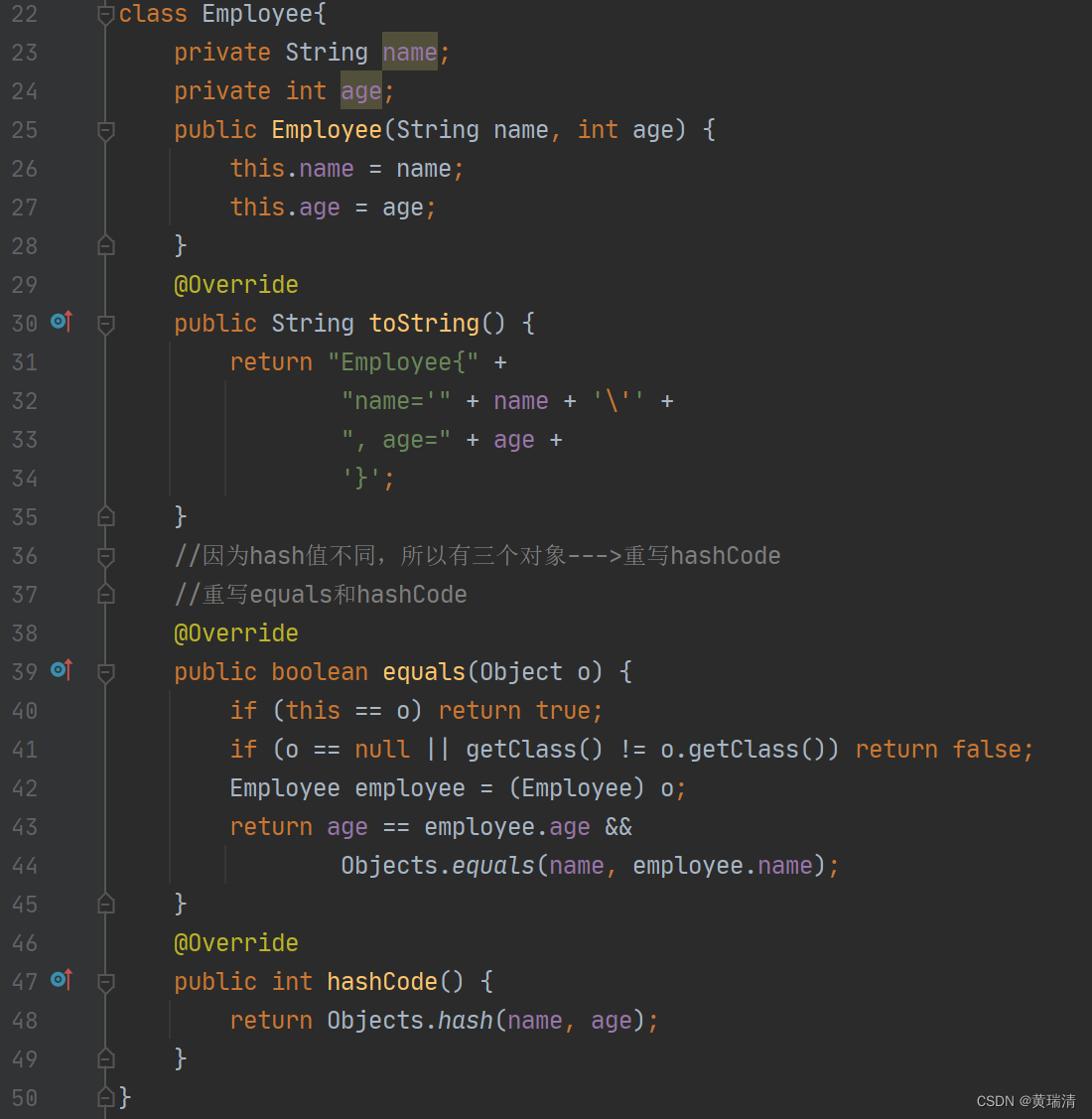

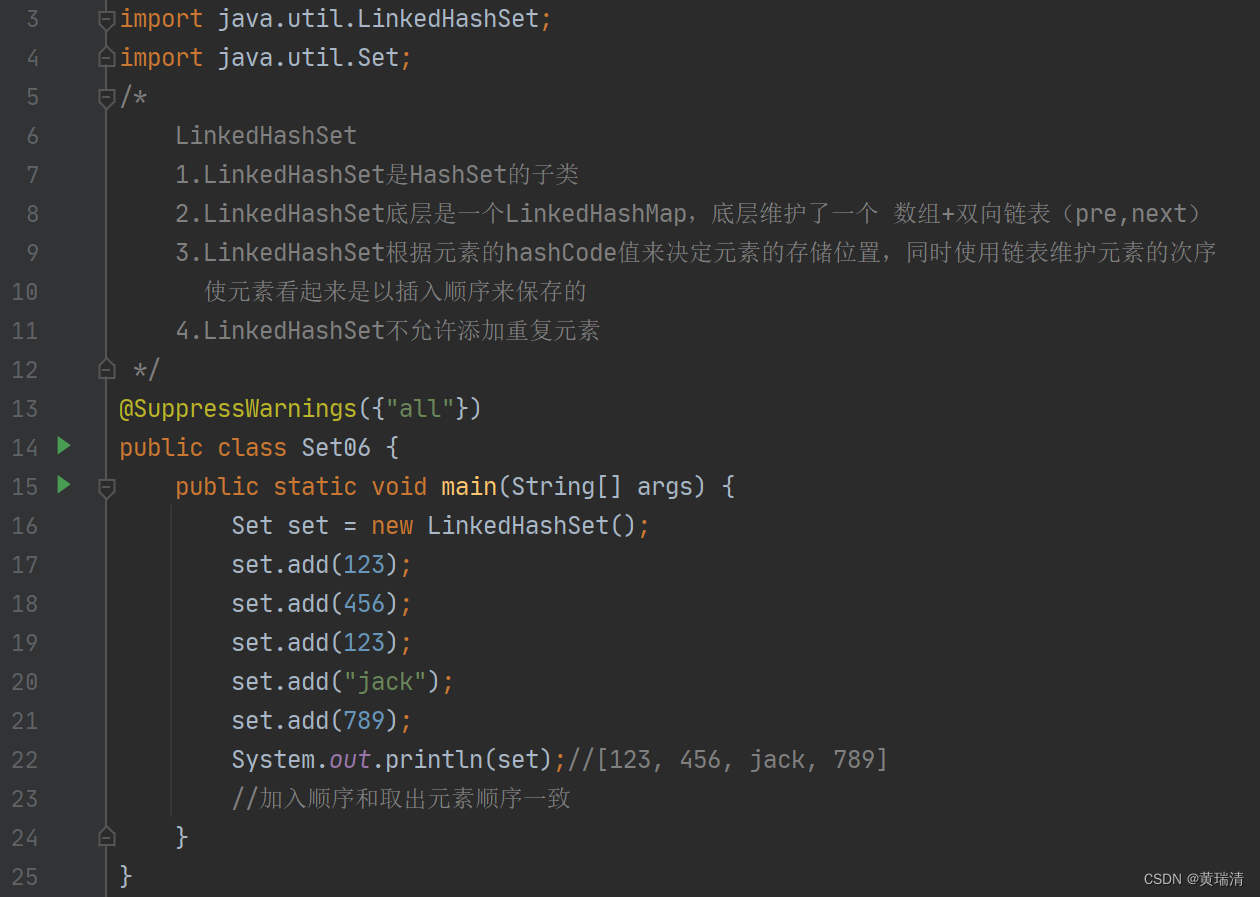

import java.util.HashSet;
import java.util.Iterator;
import java.util.Set;
/*
Set接口
1.无序(添加和取出的顺序不一样),没有索引
2.不允许重复元素,最多包含一个null
3.实现类主要有 TreeSet,HashSet....
常用方法
Set接口也是Collection的子接口,因此方法和Collection接口一样
遍历方式(不能使用索引的方式来获取)
1.使用迭代器
2.增强for
*/
@SuppressWarnings({"all"})
public class Set_ {
public static void main(String[] args) {
Set set = new HashSet();//以Set接口的实现类HashSet来演示方法
set.add("john");
set.add("lucy");
set.add("john");//重复
set.add("jack");
set.add("mary");
set.add(null);//
set.add(null);// 再次添加 null
//存放无序,且不允许重复元素,最多包含一个null
System.out.println("set=" + set);//set=[null, mary, john, lucy, jack]
//遍历
System.out.println("=====使用迭代器=====");
Iterator iterator = set.iterator();
while (iterator.hasNext()) {
Object obj = iterator.next();
System.out.println("obj=" + obj);
}
System.out.println("=====增强for=====");
for (Object obj : set) {
System.out.println("obj=" + obj);
}
}
}
import java.util.HashSet;
/*
HashSet
1.HashSet实现了Set接口
2.HashSet实际上是HashMap
3.可以存放null,但最多只能存放一个,不能有重复元素
4.HashSet不保证元素是有序的
*/
@SuppressWarnings({"all"})
public class Set02 {
public static void main(String[] args) {
HashSet hashSet = new HashSet();
/* 构造器源码
public HashSet() {
map = new HashMap<>();
}HashSet实际上是HashMap
*/
hashSet.add(null);
hashSet.add(null);
//可以存放null,但最多只能存放一个,不能有重复元素
System.out.println(hashSet);//[null]
HashSet set = new HashSet();
set.add("lucy");
set.add("lucy");
set.add(new Dog("tom"));
set.add(new Dog("tom"));//添加成功
System.out.println("set=" + set);//set=[tom, tom, lucy]
set.add(new String("huang"));
set.add(new String("huang"));//添加失败-->底层机制
System.out.println("set=" + set);//set=[tom, tom, lucy, huang]
}
}
class Dog {
private String name;
public Dog(String name) {
this.name = name;
}
@Override
public String toString() {
return name;
}
}
/*
HashSet底层是HashMap,HashMap底层是(数组+链表+红黑树)
*/
//模拟底层 数组+链表结构
@SuppressWarnings({"all"})
public class Set03 {
public static void main(String[] args) {
//创建数组,类型Node[]
Node[] table = new Node[16];
System.out.println(table);
//创建结点
Node node1 = new Node("jack", null);
table[2] = node1;//把node1放到table表索引为2的位置
Node node2 = new Node("mary", null);
node1.next = node2;//将node1结点挂载到node2
Node node3 = new Node("smith", null);
node2.next = node3;//将node2结点挂载到node3
Node node4 = new Node("lucy", null);
table[3] = node4;//把node4放到table表索引为3的位置
System.out.println(table);
}
}
class Node{//创建结点
Object item;//存放数据
Node next;//指向下一结点
public Node(Object item, Node next) {
this.item = item;
this.next = next;
}
}
import java.util.HashSet;
/*
HashSet源码解读
1.添加一个元素时,先得到hash值,会转成索引值
2.找到存储数据表table,看这个索引位置是否已存入元素
如果没有则直接加入
如果有,调用equals比较,如果相同,则放弃添加,如果不相同,则添加到最后(.next)
3.第一次添加时,table数组扩容到16,临界值是16*加载因子(0.75)=12
如果table数组到了临界值12,就会扩容到16*2=32,新的临界值为32*0.75=24,以此类推..
4.在Java8中,如果一条链表的元素个数到达TREEIFY_THRESHOLD(默认为8),且table大小>=MIN_TREEIFY_CAPACITY(默认64)
就会进行树化(红黑树),否则仍然采用数组扩容机制
*/
@SuppressWarnings({"all"})
public class Set04 {
public static void main(String[] args) {
HashSet hashSet = new HashSet();
hashSet.add("java");//
hashSet.add("hello");
hashSet.add("java");
System.out.println("set=" + hashSet);
}
}
/*
1.执行 HashSet()
public HashSet() {
map = new HashMap<>();
}
2. 执行 add()
public boolean add(E e) {//e = "java"
return map.put(e, PRESENT)==null; //(static) PRESENT = new Object();
}
3.执行 put(),该方法会执行 hash(key) 得到 key 对应的 hash 值 算法 h = key.hashCode()) ^ (h >>> 16)
public V put(K key, V value) {//key = "java", value = PRESENT 共享
return putVal(hash(key), key, value, false, true); }
4.执行 putVal
final V putVal(int hash, K key, V value, boolean onlyIfAbsent,
boolean evict) {
Node<K,V>[] tab; Node<K,V> p; int n, i;//定义了辅助变量
//table就是HashMap的一个数组,类型是Node[]
//if语句表示当前table为Null或大小为0,则第一次扩容,16个空间
if ((tab = table) == null || (n = tab.length) == 0)
n = (tab = resize()).length;
//根据key得到hash,计算该key应存放到table表的哪个索引位置,并把这个位置的对象赋给p
//判断p是否为空,如果为空,则创建一个Node(key="java",value=PRESENT)
//放在该位置tab[i] = newNode(hash, key, value, null);
if ((p = tab[i = (n - 1) & hash]) == null)
tab[i] = newNode(hash, key, value, null);
else {
Node<K,V> e; K k;//定义辅助变量
//如果当前索引位置对应的链表的第一个元素和准备添加的key和hash一样
//且满足准备加入的key和p指向Node结点的key是同一个对象
//或p指向Node结点的key的equals()和准备的加入key相同
//就不能加入
if (p.hash == hash &&
((k = p.key) == key || (key != null && key.equals(k))))
e = p;
//判断p是不是一颗红黑树,如果是,则调用putTreeVal来添加
else if (p instanceof TreeNode)
e = ((TreeNode<K,V>)p).putTreeVal(this, tab, hash, key, value);
//如果table对应索引位置,已经为一个链表,就使用for循环比较
//依次和每一个元素比较,如果都不相同,则加入链表的最后
//立即判断该链表是否已达到8个结点,调用treeifyBin,对当前这个链表进行树化
//树化时进行判断
//if (tab == null || (n = tab.length) < MIN_TREEIFY_CAPACITY(64))
// resize();
//如果上面条件成立,先 table 扩容
//只有上面条件不成立时,才进行转成红黑树
//如果有相同的,直接break
else {
for (int binCount = 0; ; ++binCount) {
if ((e = p.next) == null) {
p.next = newNode(hash, key, value, null);
if (binCount >= TREEIFY_THRESHOLD - 1) // -1 for 1st
treeifyBin(tab, hash);
break;
}
if (e.hash == hash &&
((k = e.key) == key || (key != null && key.equals(k))))
break;
p = e;
}
}
if (e != null) { // existing mapping for key
V oldValue = e.value;
if (!onlyIfAbsent || oldValue == null)
e.value = value;
afterNodeAccess(e);
return oldValue;
}
}
++modCount;//修改次数
//size 就是我们每加入一个结点 Node(k,v,h,next), size++
if (++size > threshold)
resize();//扩容
afterNodeInsertion(evict);
return null;
}
*/
import java.util.HashSet;
import java.util.Objects;
/*
HashSet练习1
定义一个Employee类,包含private成员属性name,age
要求创建三个Employee对象放入HashSet中
当name和age值相同时,认为是同一个员工,不能添加到HashSet集合中
*/
@SuppressWarnings({"all"})
public class Set05 {
public static void main(String[] args) {
HashSet hashSet = new HashSet();
hashSet.add(new Employee("jack",18));
hashSet.add(new Employee("john",18));
hashSet.add(new Employee("jack",18));
System.out.println(hashSet);
}
}
class Employee{
private String name;
private int age;
public Employee(String name, int age) {
this.name = name;
this.age = age;
}
@Override
public String toString() {
return "Employee{" +
"name='" + name + '\'' +
", age=" + age +
'}';
}
//因为hash值不同,所以有三个对象--->重写hashCode
//重写equals和hashCode
@Override
public boolean equals(Object o) {
if (this == o) return true;
if (o == null || getClass() != o.getClass()) return false;
Employee employee = (Employee) o;
return age == employee.age &&
Objects.equals(name, employee.name);
}
@Override
public int hashCode() {
return Objects.hash(name, age);
}
}
import java.util.LinkedHashSet;
import java.util.Set;
/*
LinkedHashSet
1.LinkedHashSet是HashSet的子类
2.LinkedHashSet底层是一个LinkedHashMap,底层维护了一个 数组+双向链表(pre,next)
3.LinkedHashSet根据元素的hashCode值来决定元素的存储位置,同时使用链表维护元素的次序
使元素看起来是以插入顺序来保存的
4.LinkedHashSet不允许添加重复元素
*/
@SuppressWarnings({"all"})
public class Set06 {
public static void main(String[] args) {
Set set = new LinkedHashSet();
set.add(123);
set.add(456);
set.add(123);
set.add("jack");
set.add(789);
System.out.println(set);//[123, 456, jack, 789]
//加入顺序和取出元素顺序一致
}
}
